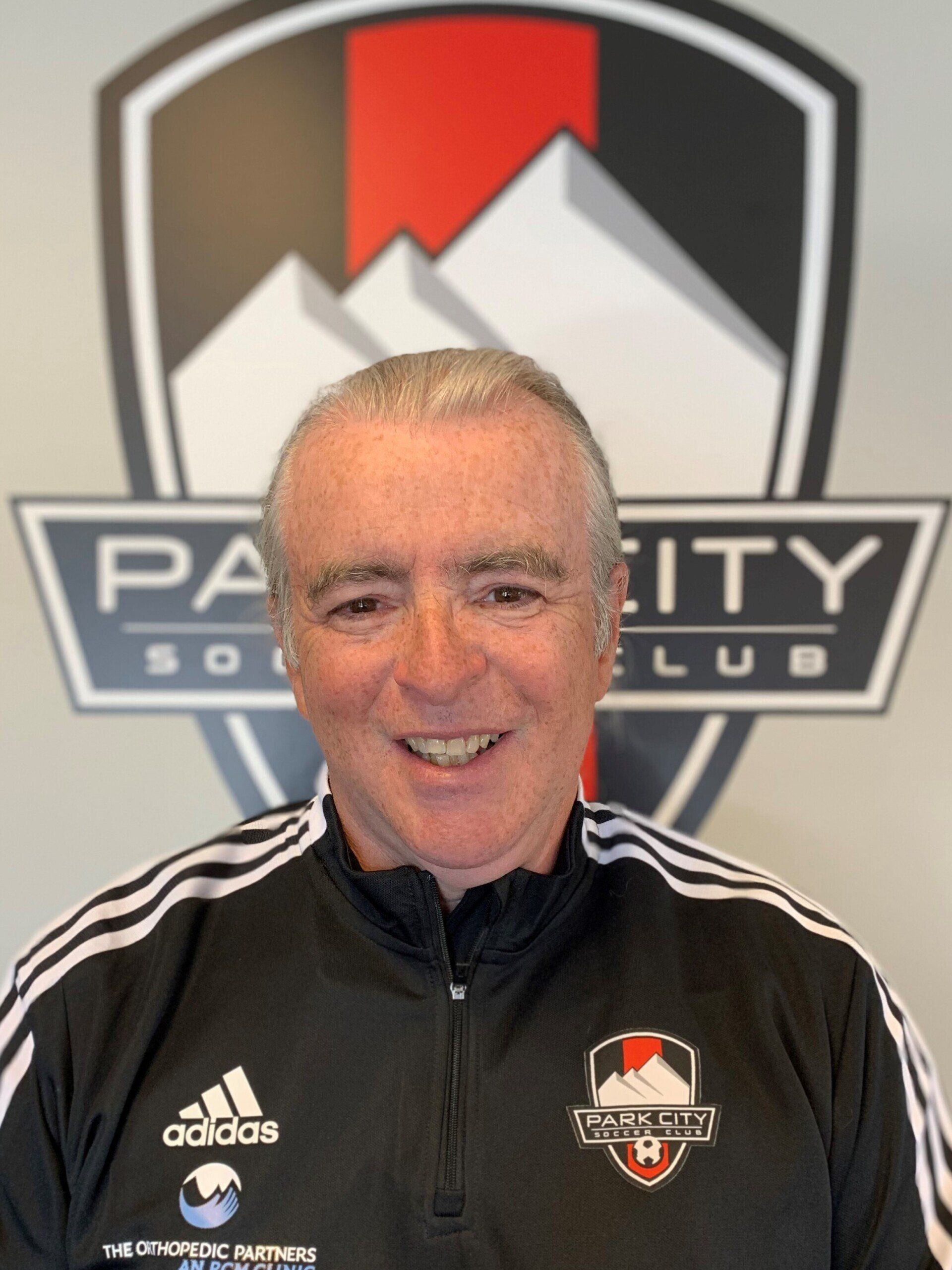Goalkeeping Program
Program Info
GOALKEEPING THE PCSC WAY
Park City Soccer Club is passionate about the development of all of our players and constantly strives to offer the best environment possible. Goalkeeping is a vital aspect of collective team success with a large amount of specificity within the role. Our comprehensive Goalkeeping Program offers ample opportunities for our goalkeepers to develop.
PCSC Goalkeeping Philosophy
The basic premise of the goalkeeping philosophy is to simply keep the ball from crossing the goal line between the posts.
In order to be successful in this philosophy, we must pay attention to the needs and details of all our Goalkeepers within the club. Details as to simple catching of the ball, to making the save in the top corner, distributing the ball as first line of attack, as well as being the last defender, all must be addressed.
A combination of hard work and a good technical education will provide our Goalkeepers with a solid foundation to become the best possible keeper that their natural ability will allow.
Consistently keeping the ball from crossing the goal line between the posts defines a successful goalkeeper.
CTT
- Goalkeeping is simple – keep the ball from crossing the goal line between the posts.
- On top of that duty goalkeepers must play their part in the team.
- We must address all areas, including simple catching of the ball, making the save in the top corner, distributing the ball as first line of attack, as well as being the last defender, and helping teammates perform better via communicating danger.
- A combination of hard work, ethics and a good technical education will help provide our goalkeepers with a solid foundation.
- Our objective is to help them become the best possible keeper that their natural ability will allow.
- The cornerstone is C C T – CONFIDENCE – COHESION – TECHNIQUE
- CONFIDENCE
- This is the toughest position on the field– goalkeepers will be hard on themselves – always be positive and build their confidence – we learn – we don’t change history – reinforce belief
- COHESION
- The goalkeeper is a team member – build cohesion between the goalkeeper and the defenders – especially the central defenders – encourage communication– reinforce mutual responsibility
- TECHNIQUE
- We will work on technique in goalkeeper practice – team coaches can assist by reinforcing via creating game-simulations
Basics of Goalkeeping
There are three basics that enter into every aspect of goalkeeping. Mastering them will give you the best chance in every situation you face as a goalkeeper.
They are:
1 - Body shape
Always get as much of your body as possible behind the ball
Put a knee down (pic) or dive/lie down and use your chest and torso to protect the goal. If the ball slips through your hands it will hit your body. Avoid bending over legs wide apart - one day it will slip through your hands....
Move your feet! Quickly and with precision – try not to dive.
Adopt a comfortable “set position” at all times – hands halfway, open, knees “soft”, on toes (see pic top-center)
Make your hands into a “W” when in front of your face (see pic bottom left)
And make a triangle when your hands are high, above your head (see pic bottom right). Otherwise open the hands to scoop the ball up (see pic top left)
2 -“GPS “
A “GPS system” in a car uses fixed points to work out where it is – you should try to do the same.
Use field markings/lines, trees, anything fixed, to know where you are relative to the goal and make sure you’re filling the goal.
Understand your position relative to the goal and the angles you make with each of the goalposts. Try to make yourself seem bigger to opponents.
Choose the best angle depending where the shot will come from (pic to right)
3 - One-on-ones
When it’s just you between a striker and the goal. It’s difficult to judge – should you come out to make yourself “bigger”? (See pic to right) or wait? It’s never easy to decide .
Try to think about the speed of coming out. Sometimes it’s better not to rush out. Use lines (GPS above) to judge your angle and stay in front of the goal as much as possible.
If there is a chance of intercepting the ball, or the striker loses control, rush out quickly and make tackle.
If striker has good control and momentum, remain inside the box, giving you potential to use hands. Make yourself big and try to draw them to the sides.
Always commit fully once you’ve decided to move, and react to the hints the striker gives you.
Watch the striker’s body language and look for hints which way they will go - – “read the hips” - will they pass you on right or left? Straight through (your legs)? Shoot? Chip?
Same approach for penalties, which are also “one-on-ones”.
For penalty kicks, goalkeepers must be active on the line (slightly bouncing side to side, arms out to the side moving up and down). As attacker starts to strike the ball, the goalkeeper should try to read the striker’s hips, ground their feet, step forward and commit to dive one way.
Remember, the best goalkeepers only stop one in three strikers in a one-on-one– the pressure is always on the striker, so remain calm and do your best
Safety
Goalkeepers are rare animals and we like to preserve them. Consequently, we need you to look after yourself. You have the most dangerous position to play and there are several situations where you need to take care. Remember, you’re not wearing protective padding like the hockey keeper.
Catching the ball – whether high or low, expect other players to be trying to get there first, with a head or a foot. Be careful of being kicked, and always clutch the ball into your chest and perhaps roll away from danger.
Diving at the feet of opponents – similar to catching, try to gather the ball and clutch it into your chest. This discourages players from kicking out at the ball. If you fear a kick, use one arm to protect yourself, especially your face, as you gather the ball with the other arm. I prefer to use the lower arm to gather and the upper arm to protect my face. If diving to the left, this will leave the right arm to protect, and the lower, left arm to gather. As you roll with the ball, raise your upper leg a little to provide protection, avoiding deliberately kicking an opponent. This will offer additional protection.
Most of all: safeguard the ball, and roll up into a ball. Remember, the referee will protect you after a play, but during the play you have to protect yourself.
It’s worth knowing the rules, especially regarding possession – when you can expect the referee to protect you. Read more detail here and here.
Use your body and legs to make the save. You don’t have to dive at a striker’s feet all the time. Sometimes the most effective (and safest) way to make the save is with an outstretched leg. When jumping, use one leg to protect yourself if you can.
Above all, be careful – there is always another game, but there isn’t another you.
Advanced Goalkeeping Techniques
Goalkeepers are rare animals and we like to preserve them. Consequently, we need you to look after yourself. You have the most dangerous position to play and there are several situations where you need to take care. Remember, you’re not wearing protective padding like the hockey keeper.
Catching the ball – whether high or low, expect other players to be trying to get there first, with a head or a foot. Be careful of being kicked, and always clutch the ball into your chest and perhaps roll away from danger.
Diving at the feet of opponents – similar to catching, try to gather the ball and clutch it into your chest. This discourages players from kicking out at the ball. If you fear a kick, use one arm to protect yourself, especially your face, as you gather the ball with the other arm. I prefer to use the lower arm to gather and the upper arm to protect my face. If diving to the left, this will leave the right arm to protect, and the lower, left arm to gather. As you roll with the ball, raise your upper leg a little to provide protection, avoiding deliberately kicking an opponent. This will offer additional protection.
Most of all: safeguard the ball, and roll up into a ball. Remember, the referee will protect you after a play, but during the play you have to protect yourself.
It’s worth knowing the rules, especially regarding possession – when you can expect the referee to protect you. Read more detail here and here.
Use your body and legs to make the save. You don’t have to dive at a striker’s feet all the time. Sometimes the most effective (and safest) way to make the save is with an outstretched leg. When jumping, use one leg to protect yourself if you can.
Above all, be careful – there is always another game, but there isn’t another you.

7 Points to Target
Our objective is to have every goalkeeper master these seven points by the end of the season, preferably without verbal reminders. These are all points that team coaches can reinforce with their goalkeeper, during their practices, and during games.
DISTRIBUTION
After securing the ball from a shot or cross, goalkeepers must quickly get to the top of the box, deciding to either start a quick counter or to slow play down to have a punt or throw/roll.
Unless instructed by the coach, punts and goal kicks should be angled towards the side line and not straight down the middle.
COMMUNICATION
Goalkeepers must shout “KEEPER” every time they go to collect the ball (even during training sessions). They must also shout “AWAY” if they are not going for the ball.
Goalkeepers must indicate by pointing and verbal commands, that they are available for, and where they want, a back pass.
Goalkeeper must immediately shout out the number needed in a wall to defend a free kick as well as organizing and placing defenders when defending corners.
POSITIONING
For penalty kicks, goalkeepers must be active on the line (slightly bouncing side to side, arms out to the side moving up and down). As attacker starts to strike the ball, the goalkeeper should try to read the hips, ground their feet, step forward and commit to dive one way.
Goalkeepers must be comfortable with the coach’s desired “resting position”. Attempt to squeeze the space between keeper and their back line when the ball as in the attacking half of the field.
Tips for Team Training Sessions
It is vital that our goalkeepers are part of team training sessions, where goalkeepers can receive the tactical training and repetition that cannot be replicated during goalkeeper training.
Try these simple drills with your keeper and/or defenders to build cohesion
Running backwards – jog from post to post backwards to learn to face ball at all times.
Jog sideways – between posts – stay facing danger – throw them the ball.
Reflexes – reverse save – keeper stands on line - face away and on your shout, turn, face, make save. Add multiple shots.
Kicking – dead ball and “live punts” – practice kicking into the goal, from 3 yrds.
Resting place – explain to your keeper where you want them when no danger, and when possibility to play sweeper-keeper
Footwork with ball–trapping, first touch, passing, clearances.
Communication – talk or shout so teammates know keeper’s in charge – practice “keeper” and “away” calls with defenders
More advanced techniques the keepers will be learning in goalkeeping practice
Stamina – use cones and jog between posts - then save - speed up to create tiredness.
Agility – learn to dive and jump up to make a second save
Footwork without ball – where to position yourself – angles – GPS – have your best strikers shoot from angles.
Help teammates with positioning and cover – keeper has a different view of opposition positioning - they are your defenders’ “eyes in the back of the head”.
Conclusion
Employ C-C-T
Confidence – cohesion - technique
MASTER THE THREE BASICS
Body shape - GPS - “one-on-ones”
TEAMWORK
Remember you’re part of a team - co-operate with your defense as a unit - know and trust your defense - get to know your center-backs well – make friends
ORGANIZE
Especially dead balls – you are the boss - be quick organizing – e.g. Free kicks - where and how many to place in wall?
You decide - organize corners - who on post - where positioned, facing direction, etc. - If in doubt, kick it out – don’t hesitate. A corner is much less painful than a goal
COMMUNICATE
Shout, scream, jump up and down – but make sure your defenders know you’re there and you’re the boss.
Critically - give yourself more time…….Think faster, act slower
Pick your moment to move, especially in one-on-one or penalty situations
CONTACT INFO
Paul Wynn
PCSC Goalkeeping Coach
Phone: 626.375.1780

Goalkeeping Videos
Contact
Site Links
TECH SUPPORT
UYSA / Stack Sports: 888.211.3444
PlayMetrics:

© 2023 Park City Soccer Club. All rights reserved


